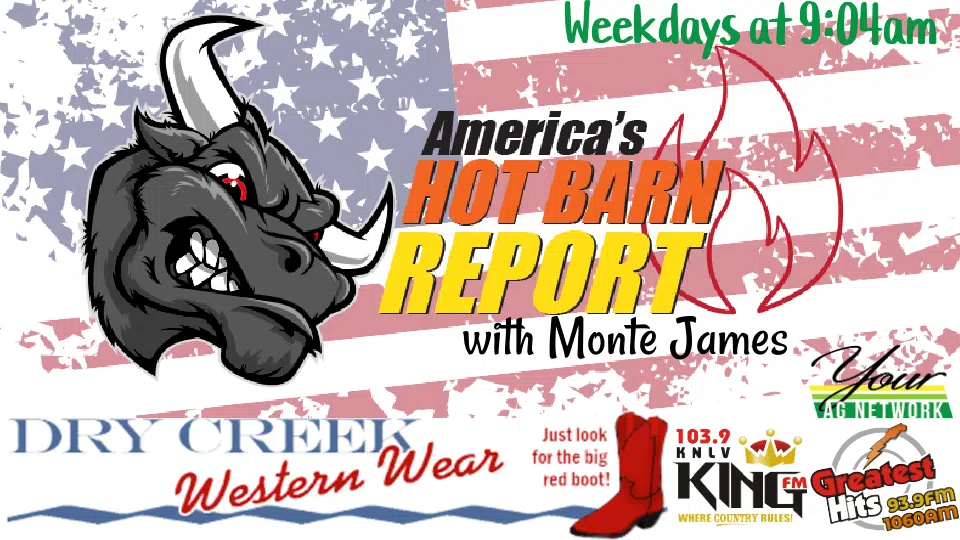By Marie Meis
Nebraska News Service
Popcorn is the U.S.’s most popular snack by volume. In 2020, 232.51 million Americans consumed popcorn products, according to U.S. Census data and the Simmons National Consumer Survey. Nebraska holds the title of the number one popcorn-producing state. Not only does it have to be grown, but seed corn has to be grown and developed to fulfill the demands and make sure that popcorn can continue to be grown.
Zangger Popcorn Hybrids is a farm north of North Loup that produces popcorn seed hybrids. The company crosses varieties of popcorn together to create more desirable varieties and then produces the seeds for farmers to grow.
Chuck Zangger started his first cross-pollination in 1984 when his popcorn wasn’t producing as he wanted. Now, based on popcorn acres, the family estimates they produce the genetics for 20-25% of popcorn in the United States and about 20% of all popcorn internationally. This means that if you pick up a bag of popcorn anywhere in the world, there’s a one in five chance that the popcorn came from the seed developed in Central Nebraska.
The company’s first popcorn hybrid was developed by Chuck in 1984. He continued to farm and slowly build his hybrids. In 2002, his son Josh came back to the family farm. Chuck, Josh and other son Luke built up the business, which now has 16 full-time employees and adds up to 40 additional part-time employees during busy seasons. Zangger’s does business both domestically and internationally, and last year, 77% of their business was overseas.
The history
Zangger’s legal name of the business is W.O. Zangger and Sons Incorporated. This comes from Chuck’s grandfather, Wilber Oscar, who started the farm in 1925. W.O. was from Northwest Iowa but his wife, Merle, was from Central Nebraska. Merle’s grandfather bought real estate all over the Midwest, and this land in Valley County was bought from the railroad. Merle’s father inherited the land but had many gambling debts and owned money on the ground. So he offered W.O. and Merle the land for $1 if they agreed to take on the debts on the land. W.O. and his wife moved to Nebraska and started farming the ground where the business sits today. He grew grasses, sugar beets, sweet corn and popcorn.
In the 1937 USDA Yearbook of Agriculture, Valley County was named as one of the largest popcorn-producing counties in the country. About 40-45% of all popcorn grown in the United States came from this area.
“There’s a history of growing popcorn in this valley,” Josh said.
When he came in 1925, W.O. built the building that is still being used by the business today. W.O. started creating sweet corn hybrids and selling the seeds to larger companies to sell to farmers. The building was first used for his work with sweet corn and has changed and adapted as the family’s business has grown and changed. Today, the building is used for secondary processing tasks such as precleaning, drying and storage.
The development of hybrids
It takes approximately eight years to produce a hybrid from the first cross-pollination to selling it to farmers.
Corn plants are monoecious, meaning their male and female parts are separate. The male part of the plant is the tassel on top and the female part is the ear of corn, much lower. This means it is easy for a breeder to control the pollination of plants.
To start, a breeder will cross two different plants or varieties. Then, lots of different genomes are produced with varying traits. The breeder will select the plants with the most desirable traits and begin to self-pollinate them and plant those seeds. Then, they will continue to select ears and self-pollinate until the traits are fixed and the plants all look the same. This creates a parent plant.
Parent A is crossed with Parent B to create a hybrid. This is done by selecting one of the parent plants to be the female plants. The female plants have their tassels removed, only being able to be pollinated by the remaining tassels of the designated male plants. At harvest, only the designated female plants are harvested. This hybrid, if desirable, is what is harvested and sold to growers for mass production of popcorn.
The business created 1,256 new hybrids in 2021. From those, they continue to select and breed to find the most desirable hybrids. About 80% of their sales came from only eight hybrids.
The first hybrid
In 1982, Chuck and his father experienced a hard frost before their popcorn was harvested. Out of their 1,200 acres, 600 of it was popcorn. And while a hard frost doesn’t hurt yield, it prevents many of the kernels from popping. Popcorn only pops because moisture is trapped in the hull and needs to burst to be released. When a frost occurs when popcorn is still growing in the field, it affects the moisture content and therefore, it often won’t pop.
“Popcorn that doesn’t pop has no value. You can’t even sell it as field corn seed,” Chuck said.
Chuck bought his popcorn seed from Crookham Seed Company in Caldwell, Idaho. Crookham produced 110-day varieties of popcorn, which estimates the time it takes for the popcorn plant to grow to maturity. It doesn’t exactly mean it will take 110 days to mature but gives farmers an estimate of growing time based on their climate. These 110-day varieties were made for eastern states like Indiana and Iowa which have longer growing seasons. In Nebraska, a farmer may experience an earlier frost in September, just like Chuck did.
“Forty to 50 percent of popcorn raised in the United States has always been raised in Nebraska,” Chuck said. “But there had been no hybrids developed for Nebraska. This was the problem.”
So Chuck explained this to Crookham Seeds, who told him to try growing the seed himself. Chuck had the education, production knowledge and space to try breeding a shorter-season hybrid, they said. Crookham seed created a cooperative breeder contract with Chuck, and Chuck developed the parent genetics, then sent them to Crookham to increase the parent populations, grow the hybrids, process and treat the seeds, and bag and ship the seed. Chuck started the genetics and Crookham grew and developed it for him.
Crookham’s first suggestion to Chuck was to breed popcorn with Native American flint corn. Flint corn is a different variety of corn, just like field corn and popcorn are different. It is often called Indian corn and has brightly colored kernels. Flint corn would have spent thousands of years being assimilated to the Nebraska climate and therefore, be the shorter season plant Chuck needed.
On his drive home from Idaho after his conversations with Crookham, Chuck remembered his childhood gardening days. When he was 10 or 11 years old, a family friend gave Chuck genuine Native American flint corn seeds. He had spent five years growing it in his garden. Every harvest, he would save enough seeds to fill a Skippy Peanut Butter jar and place it in his mom’s gardening shed. The next spring, he planted the saved seeds. He did this for about five years until he was a teenager, about 1960 or 1961.
“So this is 1984, on the way back from Boise. I thought, I used to grow that flint. I couldn’t wait to get home,” Chuck said.
He ran into his mother’s gardening shed to see the Skippy jar still full of seeds, almost 15 years later. He planted the seeds again, hoping just some of them would grow. He crossed those plants with popcorn seeds and started the process of creating a new variety.
Chuck started his first cross in 1984 and it wasn’t until 1992 that he presented his first hybrid, which was called Phoenix. He named it so because it “came from the ashes,” he said.
Building a business
At first, Chuck did the research on his farm and sent everything to Crookham to be processed and produced. As urban sprawl took over the land near Crookham, the business was running low on acres and asked Chuck to start producing his own seed. This meant Chuck had to build the infrastructure to process and mass produce his hybrids.
“We’ve got to learn how to do this,” Josh said. Josh was working in Omaha as a flight instructor but saw the potential at home. For six months, he worked four days in Omaha and drove the 3 hours back to North Loup. Then, he started full time at the farm but still commuted to Omaha to be with his wife. Finally, after two more years, the two moved to North Loup.
Josh started taking night classes at the University of Nebraska-Kearney in agronomy and soil sciences. In 2008, he was accepted into the Iowa State University master of science in seed technology online program. He learned how to build a seed business, which was happening in real-time on the farm.
“You just learn so much more when you see an opportunity to make a difference and develop something for the first time,” Josh said. “So, I know for me, it was very powerful to have that opportunity.”
Now, the business not only develops the varieties but mass produces them to be sold to farmers. After the popcorn is harvested, it goes through many rounds of cleaning and sorting, by color and size. Then, it goes through a fully automated treating system to add chemicals such as insecticide or fungicide. Then, it is bagged and distributed to growers.
Popcorn traits
Yield is an important trait that Zanggers focus on when creating their hybrids. They developed hybrids with traits like a stronger stalk or the ability for the popcorn to dry down quickly in the field.
They also focus on kernel traits that can be observed with the popcorn we eat. There are two main types of popcorn kernels, ball popcorn and butterfly.
The butterfly popcorn is what one might expect at a movie theater or out of a microwave popcorn bag. The ball popcorn is often used in pre-popped and coated products, like caramel or cheese corn.
“That’s one of our successes; we’re one of the first companies to develop that ball. That really helped us develop our company,” Josh said.
The ball popcorn was first created to replace packing peanuts, which were not considered environmentally friendly. Popcorn is cheap, biodegradable and fluffy, the perfect potential packing agent. So Zanggers started to create crosses with popcorn to create a hybrid with a popped ball. During the time it takes to create a hybrid, environmentally friendly packing peanuts were already created. However, the market had started to demand a ball pop, and Zanggers had the variety to grow it.
Ball popcorn is requested because it is easier to coat than a butterfly pop, which spreads out wide with appendages that break off easily.
“The market wants the biggest ball they can get,” Josh said. The bigger the ball, the fewer pieces of popcorn and the less coating they use per package.
For microwave popcorn, the market requests a butterfly pop that pops as consistently over a short amount of time as possible. In the microwave, the closer together in time that the kernels pop, the more popped kernels and the less chance of burning the pieces. Zanggers tries to produce the most consistent kernel and size in a hybrid for microwave markets.
For most movie theater markets, they ask for the highest expansion. Expansion of popcorn is found by popping it in an industry-specific commercial popper. Exactly 100 grams of oil is used with 250 grams of popcorn. The popper is brought to 480 degrees and the popped kernels are dropped into a tube. The higher the popcorn sits in the tube, the higher the expansion it has. The same amount of popcorn is put into the popper, but some varieties spread out further and therefore, have higher expansion. Expansion matters because it often gives the best eating experience.
White and yellow popcorn are also different varieties. White popcorn has a smaller seed size and a thinner seed coat. A thinner seed coat equates to fewer hulls, or the leftover seed coats, stuck in one’s teeth. White popcorn also crunches well and falls apart in the mouth quickly. From Zangger’s taste tests and market demand, they consider it the best eating popcorn.
The business now
The four Zangger men, Chuck and his three sons are all still involved in the farm. Luke oversees popcorn seed production, field rotations and cattle production. Josh, as president of the company, spends his time in sales and research and the third son Jacob also works full-time for the farm processing popcorn seed. And Chuck just finished his last breeding season. He continues to be chairman of the board, majority stockholder and a consultant for the business.
“As I look back on all these years, I tried to put into it as much as I could,” Chuck said.


















Comments